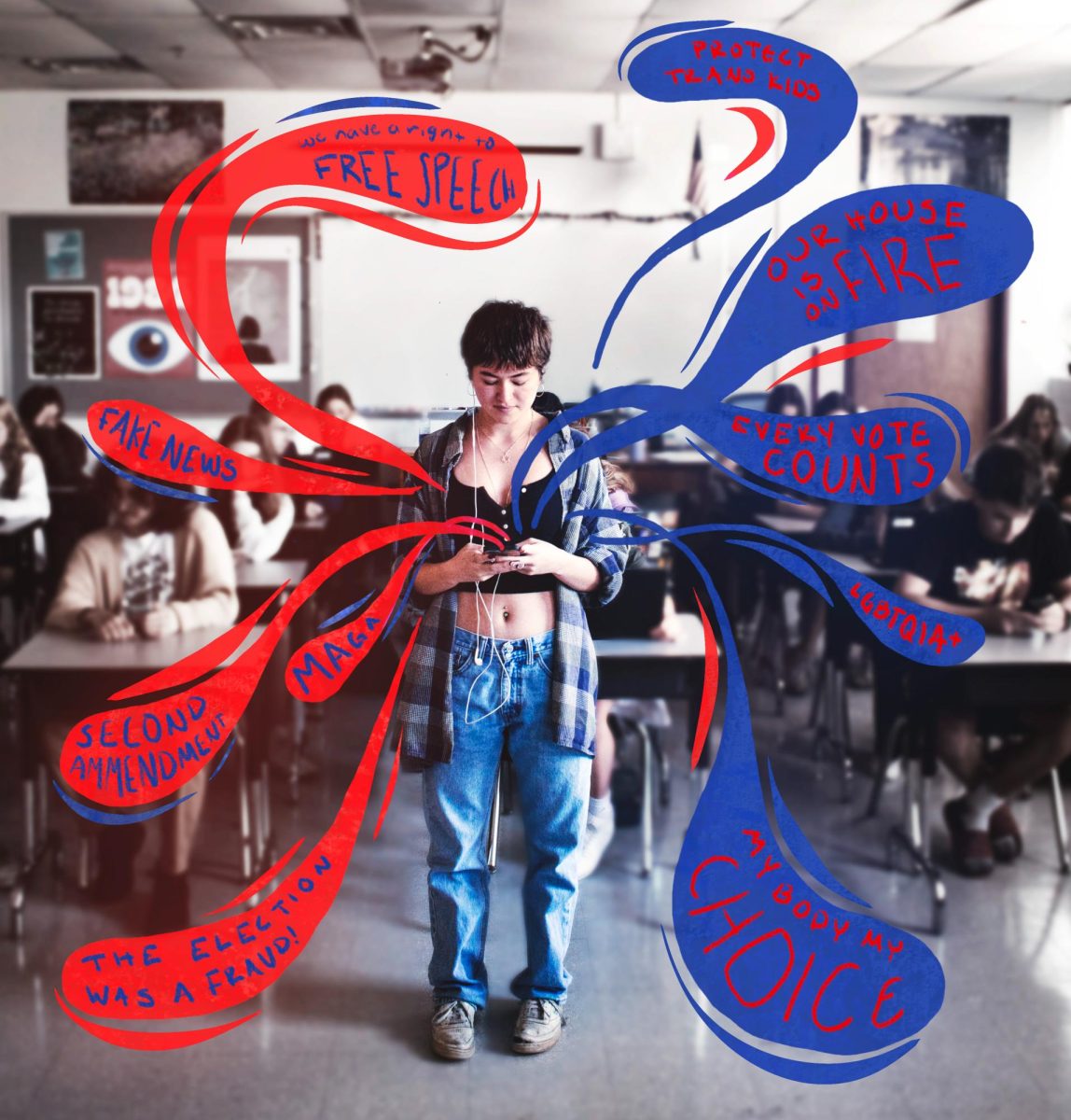Writer George Eliot once said, “We could never have loved the Earth so well if we had had no childhood in it.”
Eliot’s words reflect the childhood experience of those who spent their early years playfully in the natural world. From a young age,children are taught to care for the world in which they live. They’re told to go outside, but keep from picking the grass, leave no footprint, respect Mother Nature. This nurturing attitude children grow up with is reinforced as they enter school.
In elementary schools, students typically learn the core values of caring for the Earth and cherishing their natural surroundings through hands-on experience. Outdoor initiatives are a valued part of the curriculum with allotted time focused on planting gardens, spending time in the courtyard, interacting with animals and playing outside during recess.
In 2019, Flint Hill Elementary was awarded the Lifetime Green Flag by the National Wildlife Federation’s Eco-Schools USA program. Through the FCPS Get2Green Program, Flint Hill has established an array of initiatives to improve the school’s carbon footprint and increase the time staff and students spend outside, cultivating students’ wonder with their natural world.
“We do a lot of things for the environment,” Oliver Fulmer (’31), a Flint Hill student, said. “We compost and recycle and we even have a garden. The things that come from the garden are used in the cafeteria too.”
Fulmer also shared that he wants to be part of the Eco Action Team, a group run by Flint Hill teacher Jeffrey Bechtle. The team of fifth and sixth graders organizes the cultivation of gardens, supports the composting programs and educates students about the impact of recycling and school waste.
In higher grades, students gain critical thinking skills and the increase in curriculum complexity reflects this. This is evident in middle school science classes, when students begin to learn specifically about the Chesapeake Bay region rather than broader concepts such as ocean types. Eighth graders at Thoreau Middle School even go on a field trip to a watershed for a hands-on learning opportunity.
“Most, if not all of what we were doing was just exploring the health of the Burke Lake Park ecosystem and the biodiversity there to expand our knowledge about watersheds and ecosystem,” Thoreau eighth grader, Anna Balberchak (’28) said.
She explains that students went through six different stations, with everything from testing water quality to writing haikus about Burke Lake. However, this field trip is one of the only activities implemented to increase environmental engagement.
“If [climate change] is discussed, it is mainly in our science classes,” Balberchak said. “We have occasionally brainstormed environmentally friendly alternatives to things that we use daily, but overall I feel like it is not addressed enough in school.”
Middle schools provide fewer opportunities to recycle and spend less time outside, forgoing the benefits nature provides and forgetting the importance of it.
When students enter high school, almost all climate activities and initiatives disappear. During the day, students don’t spend any time outside with the exceptions of, perhaps, lunch and P.E, having a connection with nature is simply not a priority anymore. This, coupled with increased homework, workload, time spent on technology and lack of relevant curriculum, means high schoolers are less likely to maintain a close relationship with nature. Even so, some students are still trying to do their part for the environment.
“I think there is an issue that students don’t really want to take action because they think the climate is hopeless,” Nate Goss (’25), a member of SEA Club, said. “The Students for Environmental Action club is focused on making new initiatives at Madison and how we can implement them. We are making Earth Day a spirit week to raise awareness at Madison.”
Despite the efforts of student-led clubs such as SEA Club and MAD Climate Leaders, in comparison to other schools in the county, Madison is behind on achieving FCPS’ climate goals, like becoming carbon neutral by 2040. According to Get2Green, only 14% of the waste produced from the building is recycled, a meager amount especially in comparison to other FCPS schools. For comparison, within FCPS the lowest amount of waste recycled is 7% and the highest is 79%. The school also uses a considerable amount of energy for the size of the building which makes Madison’s eco-footprint even bigger. With data provided by Get2Green, Madison received an energy star score of 65/100 as of March 2024. Furthermore, there are no classes offered that have a large focus on climate change other than AP Environmental Science.
“I feel as though as I’ve gone through school at FCPS I’ve had less and less education and involvement with the climate, spending less time outside and there are less environmental initiatives in high school than elementary or middle school,” Sydney Hoffman (’24) said. “Even though I’m taking APES now I still feel as though the school needs to do more on raising awareness on the state of the climate and how we can help the Earth, be it advisory lessons or increasing the importance of recycling school wide more needs to be done to reduce Madison’s carbon footprint.”
As a district, FCPS has taken some measures to ensure they are helping to fight climate change. As members of the Fairfax County Joint Environmental Task Force, they have pledged to provide fully carbon-neutral transportation by 2035. Recently they purchased 40 electric school buses and eight have already been put into use. However this purchase comes with consequences—each bus costs about $230,000, double the price of a regular school bus. Plus, with nearly 200 schools in the county, there are not nearly enough buses or funding to reach most of the schools within FCPS.
Reintroducing high school students to environmental issues and re-implementing the eco-conscious mindset of elementary school children is not as far off as it may seem. Madison educators could implement climate-related curriculum into classes, like elaborating on the lasting environmental impacts of the Industrial Revolution or looking at climate data in statistics classes. This idea of curriculum adjustment has already been accomplished by the language department at Madison as high level classes are learning about globalization, climate issues and new advances in technology.
“AP Environmental Science [APES] provides a good range of science knowledge and content such as pollution and problems in the air, ground and water and ways to improve them,” Joshua Shipman, an APES and Geosystems teacher, said. “For people that are not taking APES there should be more climate awareness and exposure for students, whether that’s part of a required course or extracurricular, just so that everyone is engaged in the conversation surrounding the climate and environment.”
However, Madison’s environmentally-centered content does not focus on how students can combat these global issues. The shortage of education on climate change will be problematic for future graduates as climate change is a rapidly growing problem. Due to the lack of urgency by previous generations and politicians on achieving climate goals, this generation will have to be the one to fight it.
“I’d say that Madison’s stance on climate change and their approach to fighting it is pretty neutral,” Naomi Layman (’25) said. “They could be doing more with recycling and waste management as well as promoting activism among students.”
With all of their efforts, FCPS will need to continue raising awareness and starting initiatives to reduce their impact on the environment. Introduce climate-focused curriculum, reduce waste, find ways to improve energy efficiency. And maybe Madison could aim to recycle more than 14% of our waste from the building.





